
28 minute read
EXPERT EYE
Evolution, not revolution
Chris Mason, CEO at FISITA explores the continued transition of the automotive and mobility industry
Written by: Chris Mason, CEO, FISITA
In response to the COVID-19 stayat-home governmental policies and recommendations in 2020, many businesses around the world were forced to quickly develop and adapt strategies to accommodate remote working and virtual engineering capabilities. Established working practices which had evolved over decades were challenged and changed as reactive measures sustained business operations. As time progressed, many of these nearterm measures evolved into clear, long-term efficiencies. New methods and pathways were created and embedded within the workplace, and for those in automotive engineering, this meant everything from research and design to product development and testing.
As pandemic restrictions ease around Europe, automakers, suppliers and start-ups are exploring how they can make the transition into stable and sustainable business operations within a changing professional and societal environment. With this change, they must also address the new challenges and opportunities within the workplace, including how automotive and mobility engineers will be motivated and the possible impacts this shift will have on the long-term change in human behaviour. Automotive world leadership is adapting and preparing not only for the near-term, but also for a future in which sustaining efficiency in a rapidly changing operational and cultural environment will impact every organisation in this arena – automakers, suppliers and start-ups. Much like the shift of the automotive industry into a mobility- and technology-driven ecosystem, the workplace must quickly adapt into a more fluid and progressive process that benefits all. FISITA itself has evolved to align with the rapid evolution of the industry, most recently through its ‘Workplace Evolution’ report that explores the impact of digitalisation on the future of work and leadership.
The impact of technology
Despite ground-breaking innovation across the industry such as intelligent safety systems and electrification, software for virtual meetings, company-wide and team collaboration tools, webinar platforms and virtual conferencing architectures have driven development in recent years. For example, many European automakers and suppliers are in constant communication with countries such as China and the US,
to collaborate, discuss and share knowledge on emerging innovation for new vehicles. Without this seemingly simple technology, many businesses would have struggled to make any progress, slipping to the back of the highly-competitive global market. Today, FISITA’s European members, such as Faurecia, Qualcomm and Bosch, are all taking steps to realise this vision, sharing their knowledge and understanding of the changing landscape.
The novelty lay not in these tools, but in the realisation of how much work could be done quickly, efficiently and productively via reliable and sophisticated online and remote working arrangements. As remote working has evolved, unanticipated upsides have emerged for the industry, and these will continue to be a driving force. Our own organisation identified this shift early on, transforming the way we interact with our members through a digitally connected international community. Enabling industry influencers and technical specialists to continue to debate, discuss and share is critical to any business’ success and something the mobility technology community in particular thrives on.
Conferences were also switched from physical to online events, adjusting traditional conference revenue streams, but also reducing delegate and speaker travel costs and time away from their core business. Webinar demand increased rapidly, and anecdotal evidence suggests online meetings democratised participation, encouraging and increasing engagement. Work was completed more efficiently, and business continuity maintained. FISITA itself used this shift to transform the organisation to better connect its members across the world, which saw a boost in online events and working groups, driving discussion and collaboration across Europe – and beyond.
Clearly, there have been downsides. Businesses faced upheaval, management time was diverted into crisis mode, and companies incurred costs – especially in needing to ship the tools to enable staff to work from home. Staff, too, found the transition difficult, with the lack of personal human interaction a commonly cited challenge, as employees realised the value of face-to-face work. However, companies and staff have adapted to the new way of working, communicating and, ultimately, getting the job done.
The ‘new normal’
Even as restrictions ease, the COVID-19 pandemic continues to challenge European businesses beyond expectations. These challenges have added complexity to a vertical arrangement where innovation, technology deployment and product development are accelerating, and traditional relationships are rapidly evolving between automakers and suppliers.
In recent years, pressure has been increasing across the international engineering community to adapt to changes in employment, recruitment and retention, team working, continuous learning, personal development, relationships and sustainable professional motivation. As such, it is vital that an international community is established to ensure progress for every level of the business. Answering the call, FISITA’s community, which consists of OEMs, suppliers, start-ups, academia and governing bodies, has created the infrastructure for seamless and valuable knowledge sharing across peer groups within the industry.
For organisations to remain relevant, the way forward is for businesses to reinvent how they organise and work. Business, society, and people must come together in harmony to find solutions in the ‘new normal’. The way businesses operate will have to alter; today’s rigid structures must change. The focus should be on purpose, agility and enabling teams to discover solutions at ground level. It is also essential to keep pace with technology, and to attribute importance to compliance and data security with the right infrastructure systems in place.
Leadership culture needs a major rethink too, and rigid hierarchies will need to be replaced with flatter, role-based, or communitybased structures. Greater levels of transparency on business decisions enable staff to add value to an organisation. Sustainability matters – so in that respect business should support associates to take up socially relevant causes by offering flexible working models.
We need to reflect not only on how we get back to ‘normal’, but also understand how we can deal with the ‘new’ normal. To find out the answers, we here at FISITA started asking ourselves: “Is enough of today, good enough for the future?”
ABOUT THE EXPERT
Chris Mason joined FISITA as CEO in 2014 and is a Fellow of the Institute of the Motor Industry. Overseeing the extensive modernisation of FISITA, he has led its transformation into a leading platform for global knowledge exchange and collaboration across the wider automotive and mobility systems industry. Chris has repositioned the organisation as the FISITA International Connected Community, enabling a new era of digital member engagement.
A FORCE TO BE RECKONED WITH

Officially the largest Salesforce event in Europe, this momentous occasion brings together thousands of partners, customers, technology innovators and thought leaders to share ideas, discuss industry trends and perhaps most vitally, to network.
People from across the globe have flocked in colossal numbers to both celebrate and investigate further the benefits and developments of the Salesforce platform. Several inspiring minds and master innovators are in town to share tips and tricks on how to implement better customer engagement and retention tactics within a business throughout the day.
This jam-packed show of innovation, connection, and learning is aimed at inspiring and preparing users and visitors for what lies ahead across all industries. In the Keynote sessions, we are treated to demonstrations and insight into Salesforce optimisation by some of the UK and Ireland’s leading Trailblazers, surprise guests, exciting innovation announcements, and live product demos. Trailblazers are using the new Customer 360 feature to strengthen their relationships, overcome challenges and accelerate growth as users look to the future.
A key mantra repeated across today is ‘Knowledge is power, but shared knowledge influences’. The sharers of this world are the ones that inspire, motivate and provoke change for the better. World Tour London offers all attendees the chance to experience the UK’s largest cloud ecosystem under one roof, along with the chance to network with thousands of the sharpest minds in business.
The main hall of the event is a bustling hive of activity and furious networking. The unadulterated enthusiasm for the Salesforce product is palpable in the room, with animated conversation sparking up everywhere you turn. There is then a flurry of activity as vast supplies of breakfast pastries and coffee emerges from all sides, cueing the stampede to the buffet tables to refuel and re-caffeinate in between conversation.
The organisers have created a real festival style atmosphere, with an abundance of stalls and pop-up features to explore. There are stands offering every form of development tips and masterclasses on how to achieve excellence with new Salesforce features, aimed at empowering all users to create engaging experiences online using modern development tools.
The sheer scale of the event is breathtaking, with London’s ExCeL playing its part in bringing the day to
We attend the Salesforce World Tour London event, as business leaders and innovators showcase the new era of digital work
Writer: Ed Budds

life. In the aftermath of the COVID-19 pandemic, it is still exhilarating to be back in rooms with this many people.
Passing by the Trailblazer Theatre we observe a variety of talks taking place on the new software development tools of Salesforce, the power in scriptable control, code building software updates and lightning frameworks which use the modern language of the web.
As we settle in for the first keynote session, there is a live band serenading us into the impressive underground arena. Saxophones and booming beats from the live house band ring out across the innovative circular stage design, which allows for equal viewing from all angles.
UK tech giant Currys shows us how accelerating its digital transformation has helped to create the best possible customer experiences, using Salesforce, with the customer 360 feature. This allows the company to bring the convenience of the online shopping experience to store with a live feed chatbot feature, directing buyers to the sales team, made available when purchasing products at home. £1 in every £4 spent on technology in the UK is through Currys, which is why it must continue to evolve with the latest advances in data evaluation and customer personalisation. Employees on the sales team, with the help of Salesforce customer 360, can view a comprehensive summary of customers’ purchase history, discarded basket items, and search data, in order to provide a more personalised form of guidance. Additionally, Salesforce’s new augmented reality feature allows for a digital virtual mock-up of a product to be displayed in your workspace at home in order to effectively try before you buy.
Zahra Bahrololoumi, CEO for Salesforce UK, details how every innovation anchors around the customer, and improves the experience of using the platform. She then discusses the way in which brand managers can personalise the experience for customers, as well as the focus on exploration of the new frontier that is the NFT (non-fungible token) market.
Concluding the day’s bountiful offerings is the final keynote presentation in the form of an in-depth interview with Hollywood megastar and global activist Benedict Cumberbatch CBE.
Answering every question with detail and a thoughtful consideration, Cumberbatch comes across as wonderfully unassuming and down to earth, which is no mean feat for someone we are so accustomed to watching on the big screen as one of Earth’s mightiest superheroes.
He even seems faintly embarrassed when asked about the recent unveiling of his name on the Hollywood Walk of Fame. Talking extensively about his passion for activism, as well as his charity work, Cumberbatch details how he helped to create an educational outreach initiative as part of his theatre work over the years in collaboration with the Barbican centre, London.
Then moving on to eloquently tackle the subject of equality and equal pay in Hollywood, Cumberbatch explains how he tries to constantly use his now gigantic platform to give those who remain voiceless a chance to speak out and therefore enact change. Finishing with a discussion of his excellent Oscar-nominated role in Jane Campion’s fierce drama, The Power of the Dog, he then drops a teasing hint about an upcoming film in development with dynamic director Paul Greengrass. Cumberbatch is a delight and an uplifting crescendo to this hugely successful event.


WOMEN IN
POLE POSITION
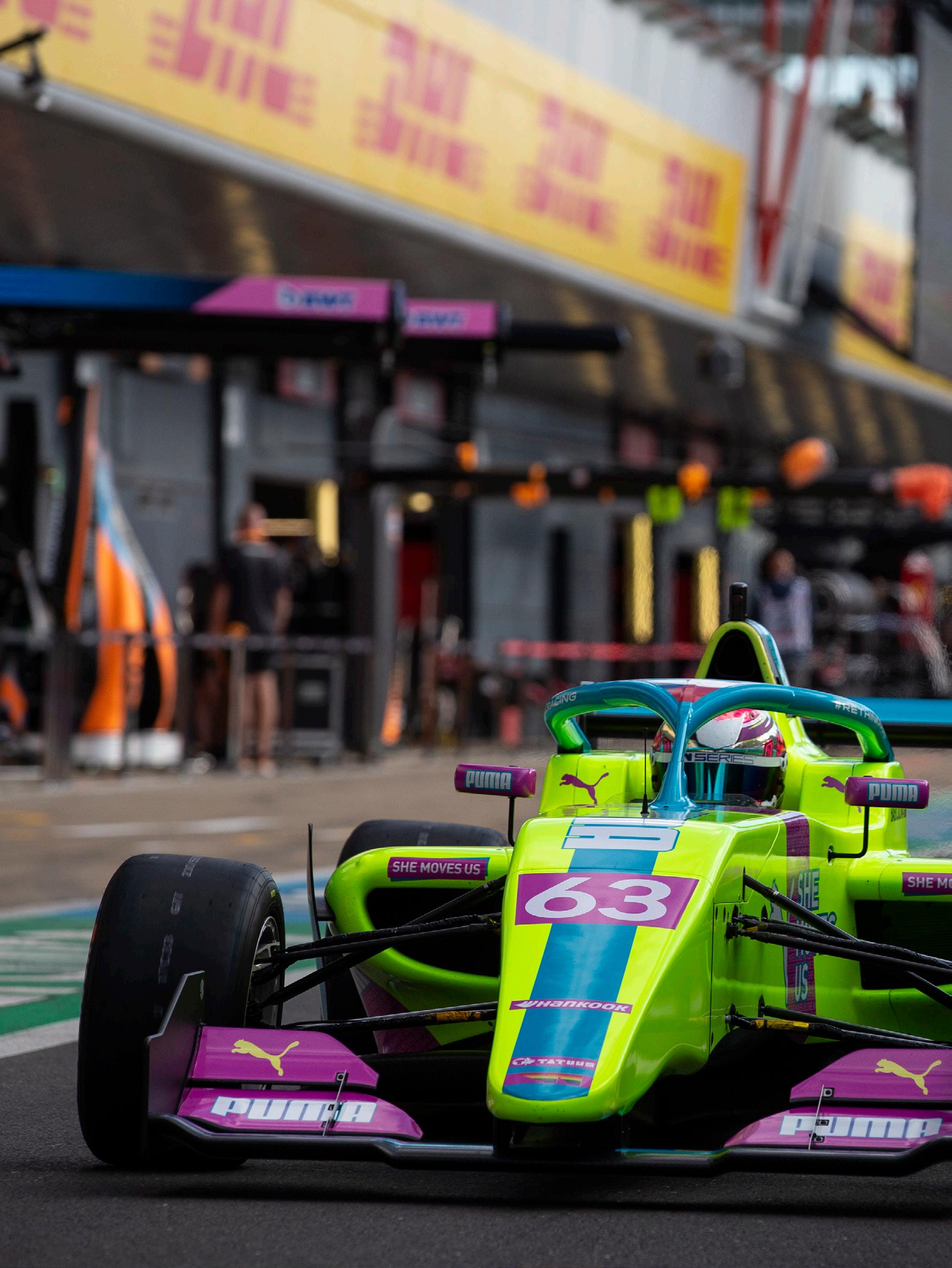
With ambitions to make 2022 the biggest W Series season to date, Catherine Bond Muir, CEO, reflects on the journey so far and the latest milestones achieved at this year’s Silverstone event
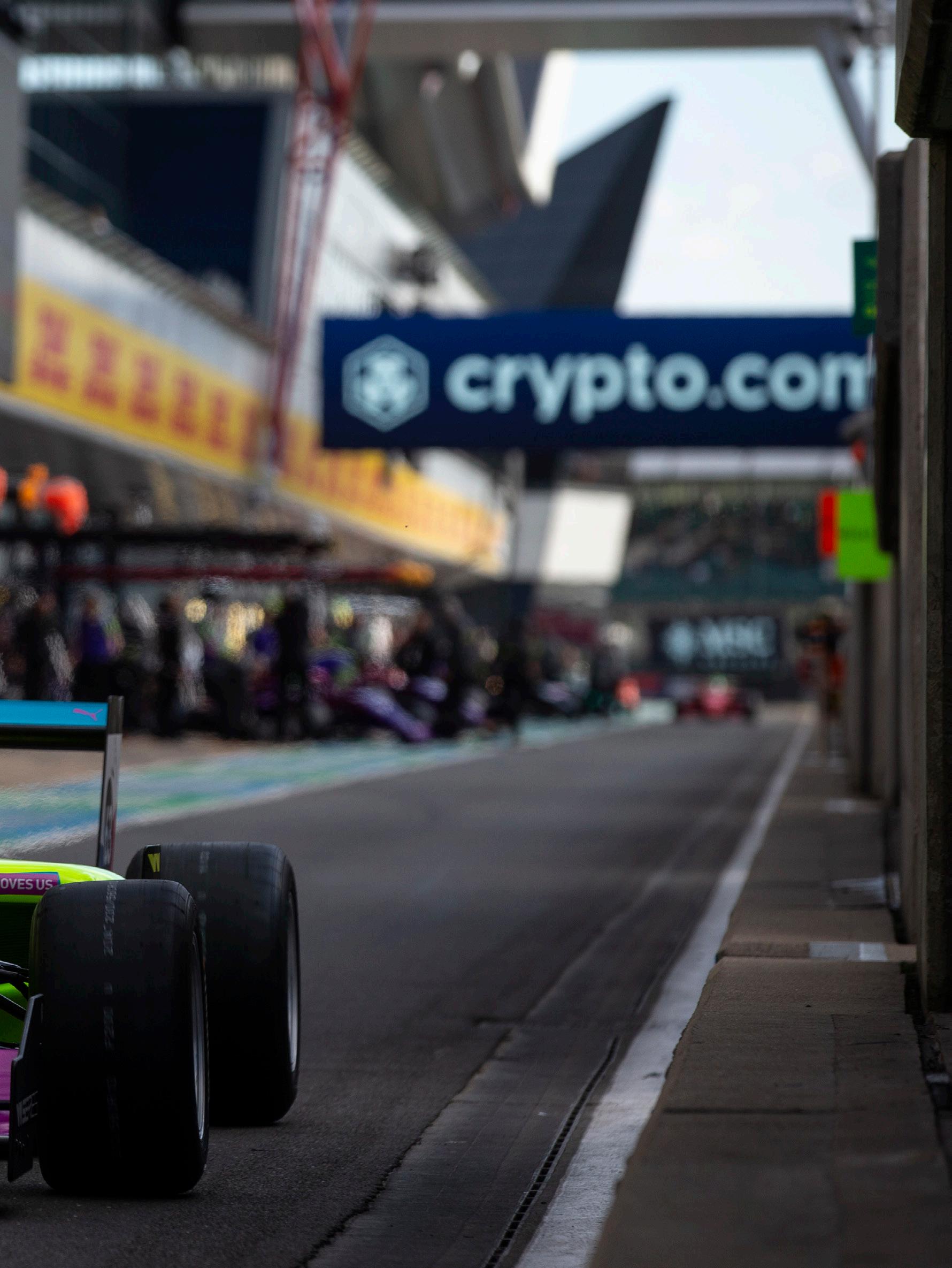
Writer: Jack Salter

It has been over 45 years since a female driver raced in a Formula 1 Grand Prix. To rethink racing and fast-track change, W Series was launched in October 2018 to provide equal opportunities for women and eliminate the financial barriers that have historically prevented them from progressing to the upper echelons of motorsport.
W Series drivers are selected purely on their ability and the cars are mechanically identical, which means that races and championships are won by the most talented drivers, rather than those with the wealthiest backers.
The more high-profile, successful female role models that W Series can create, the more it will inspire young girls to get into the sport. A prime example is Jamie Chadwick, who won the inaugural season in 2019 and retained her title in 2021.
As such, W Series can be an important cultural catalyst for female empowerment. It wants to build the world’s most popular and inclusive female sporting series, and in the process create a platform to accelerate gender equality across the world.
W Series is racing alongside Formula 1 at eight Grand Prix weekends in 2022, with the fourth race of the season at Silverstone in July viewed by record-breaking audiences.
We speak to the CEO of W Series, Catherine Bond Muir, who charts the rapid rise of the championship and reacts to the recent Silverstone success.
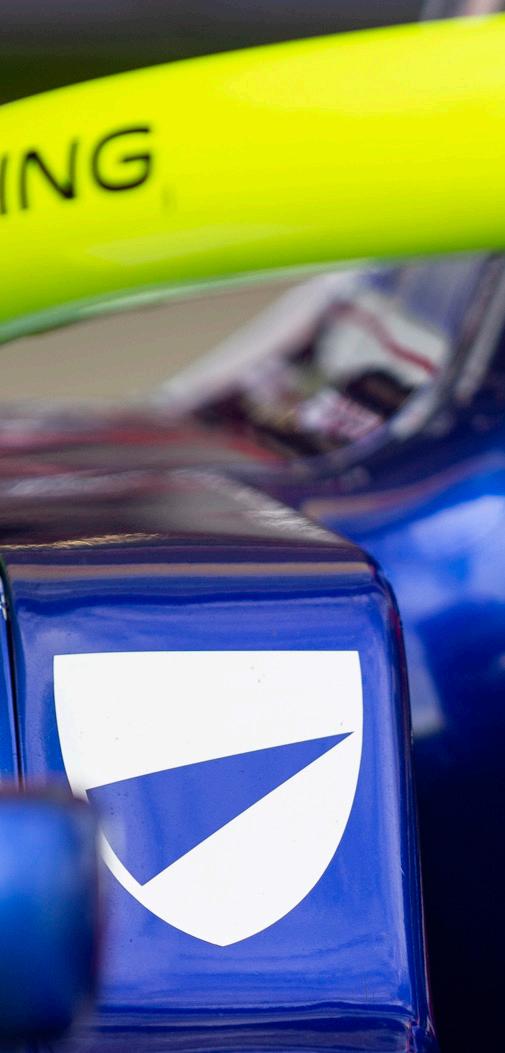
EME Outlook (EO): How successful has W Series been since it launched in 2018? What have been some of the key achievements to date?
Catherine Bond Muir, CEO (CBM): It has exceeded all expectations. I think getting the whole series broadcast live on Channel 4 in 2019 was a real coup, and certainly in the UK it put a marker down as to what was possible for W Series.
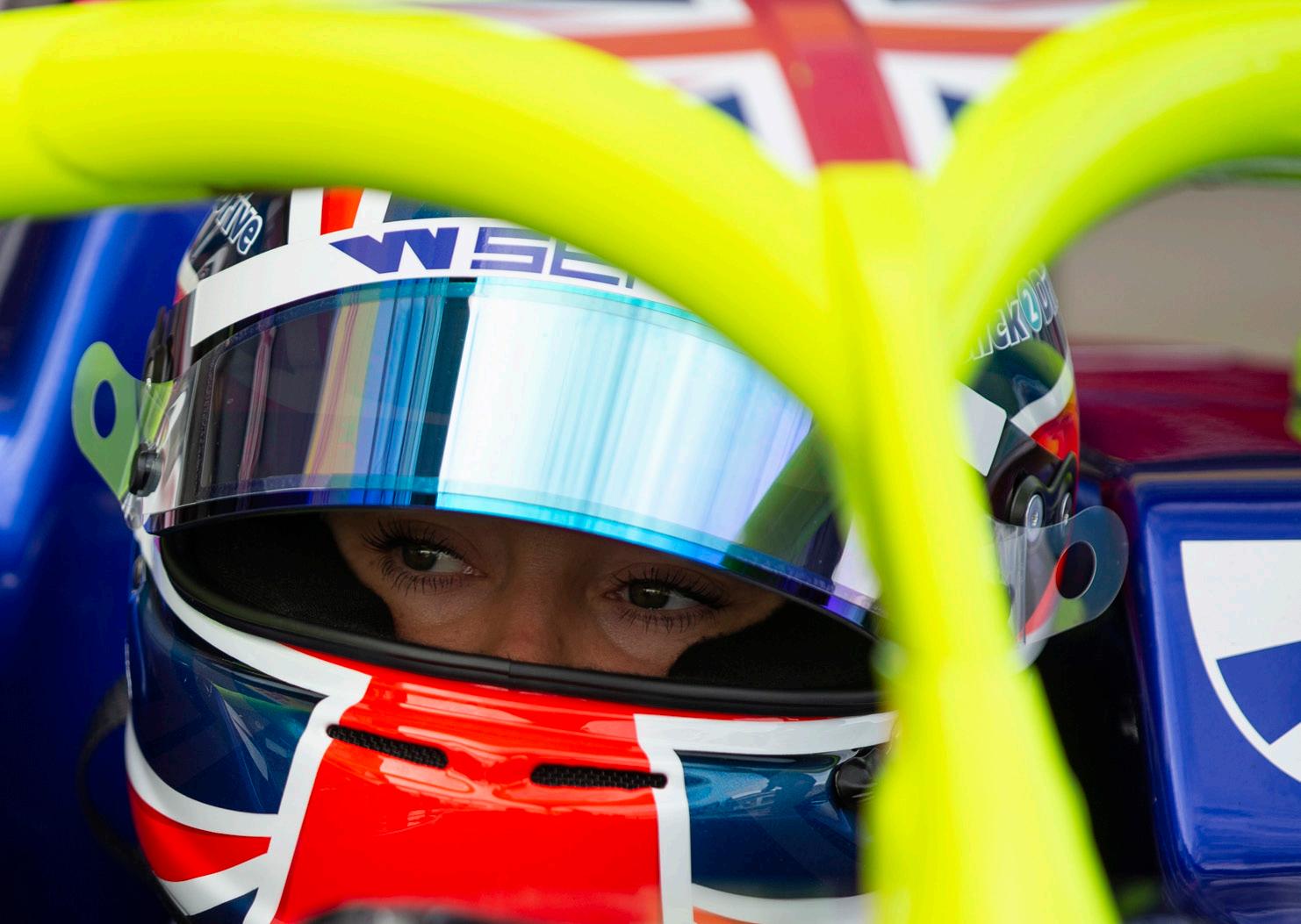
As for the following year, I think the main achievement was surviving the COVID-19 pandemic and doing an e-sports series.
It showed what a fantastic team there is at W Series as they pivoted to do things that no one had ever done before.
The great thing we did in 2020 was to partner with Formula 1, and coming into 2022, getting a million viewers in the UK over the Silverstone weekend was an extraordinary feat for us.
Every year we seem to be breaking records, but from my point of view, we’ve always got to remain humble and there’s always more to do.
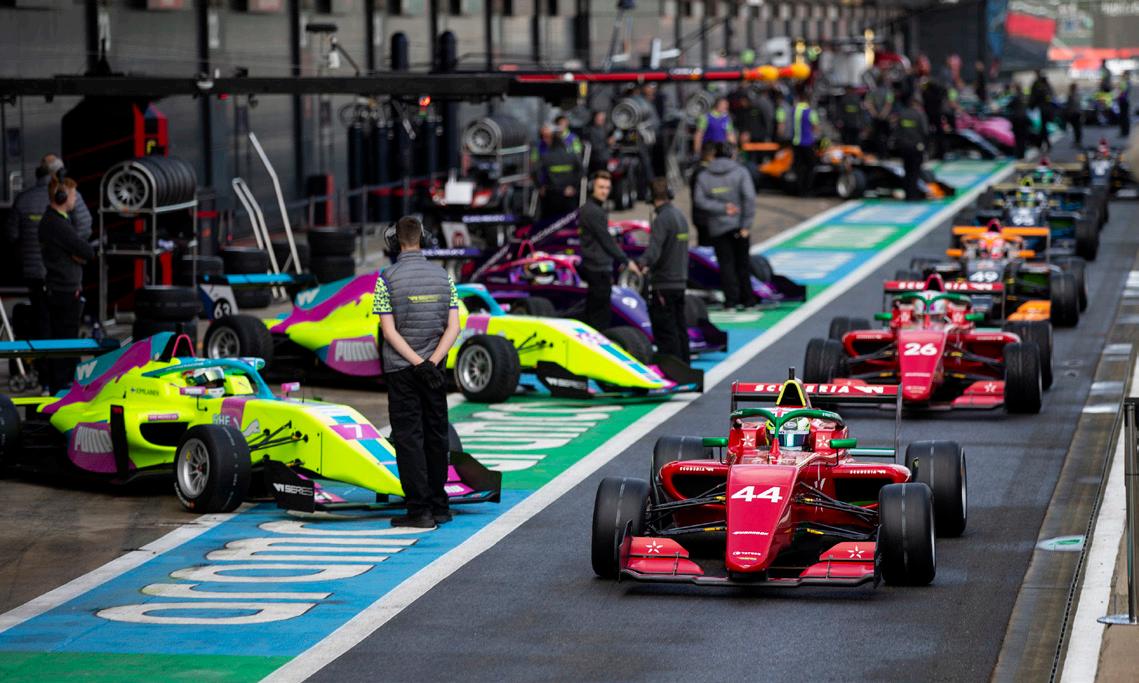
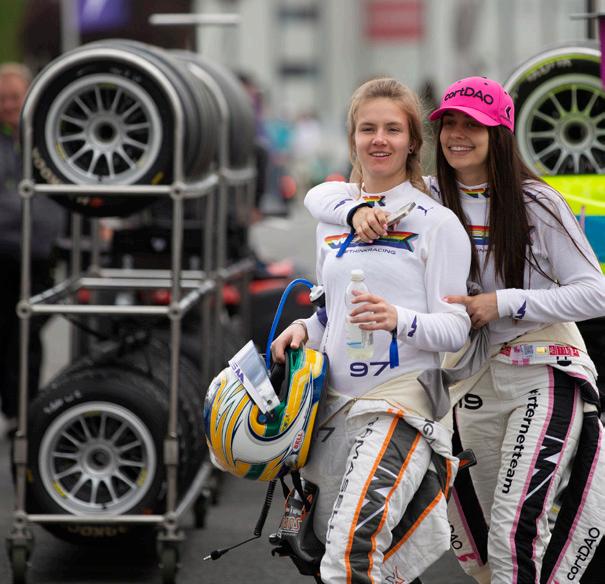
EO: In what ways has W Series managed to capture the imagination of the media and fans, particularly women and girls?
CBM: The structure of W Series is unique. We own all of the cars, and they are identical in performance to ensure that we find the fastest drivers.
Of equal, if not more importance, is that we are a free-to-enter championship. It’s not about finding who the richest drivers are or who the drivers with the wealthiest parents are.
I think people have enjoyed and warmed to W Series so much because it gives equal opportunities to all women.
EO: With big ambitions to make 2022 the biggest W Series season so far, has interest continued to increase in the sport this year?

CBM: I think if you know about motorsport, especially in Europe, you know about W Series. I don’t think that’s the case in the US yet, but lots of people haven’t even heard of Formula 1 there, so that’s going to take a longer period of time.
But of course, we want it to be about sports fans and then just the general public, once we have a profile where people are reading about us and there are stories about us in a variety of different media across the world.
We’ve just got to build an audience, it’s a commercial imperative that we do that and keep growing.
EO: As a British-based business with larger audiences in the UK than any other country, how important is W Series’ home race at Silverstone?
CBM: It feels like a celebration of what we are. W Series is British-based, most of the Formula 1 teams are British-based, and they love it because it doesn’t involve a huge amount of travelling.
We had six British drivers at Silverstone this year and two British drivers on the podium, so it’s just
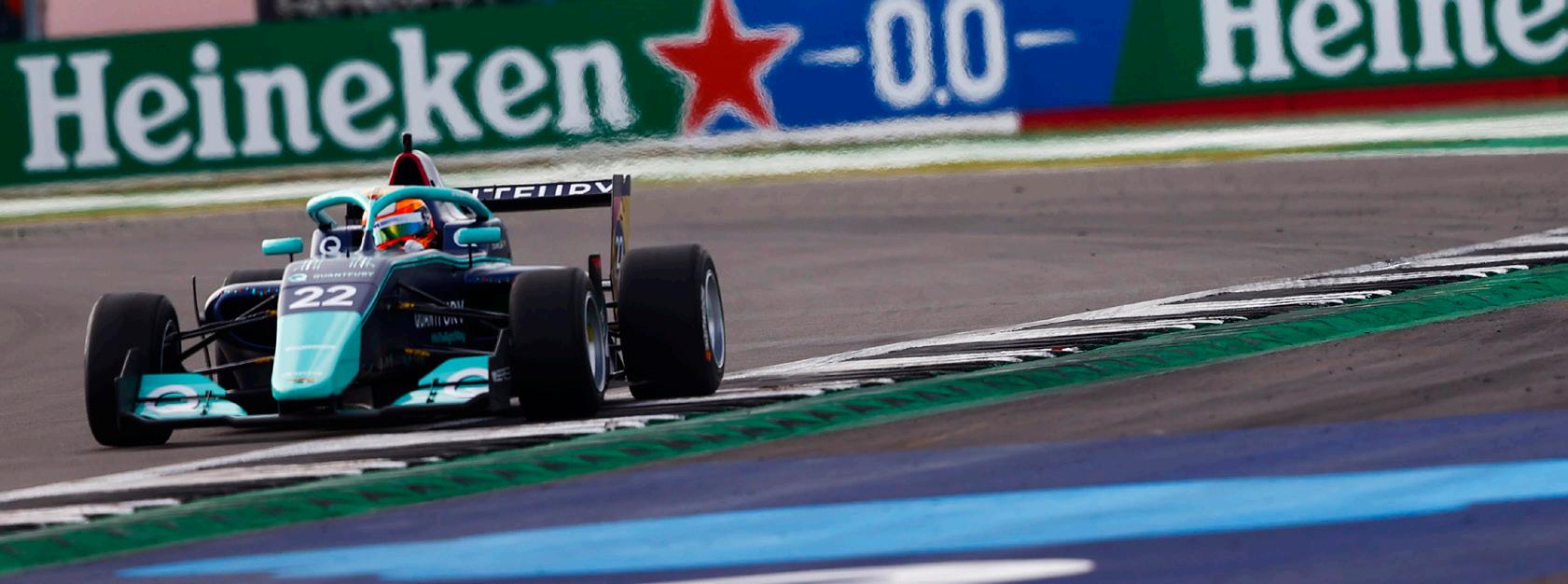
– CATHERINE BOND MUIR, CEO, W SERIES
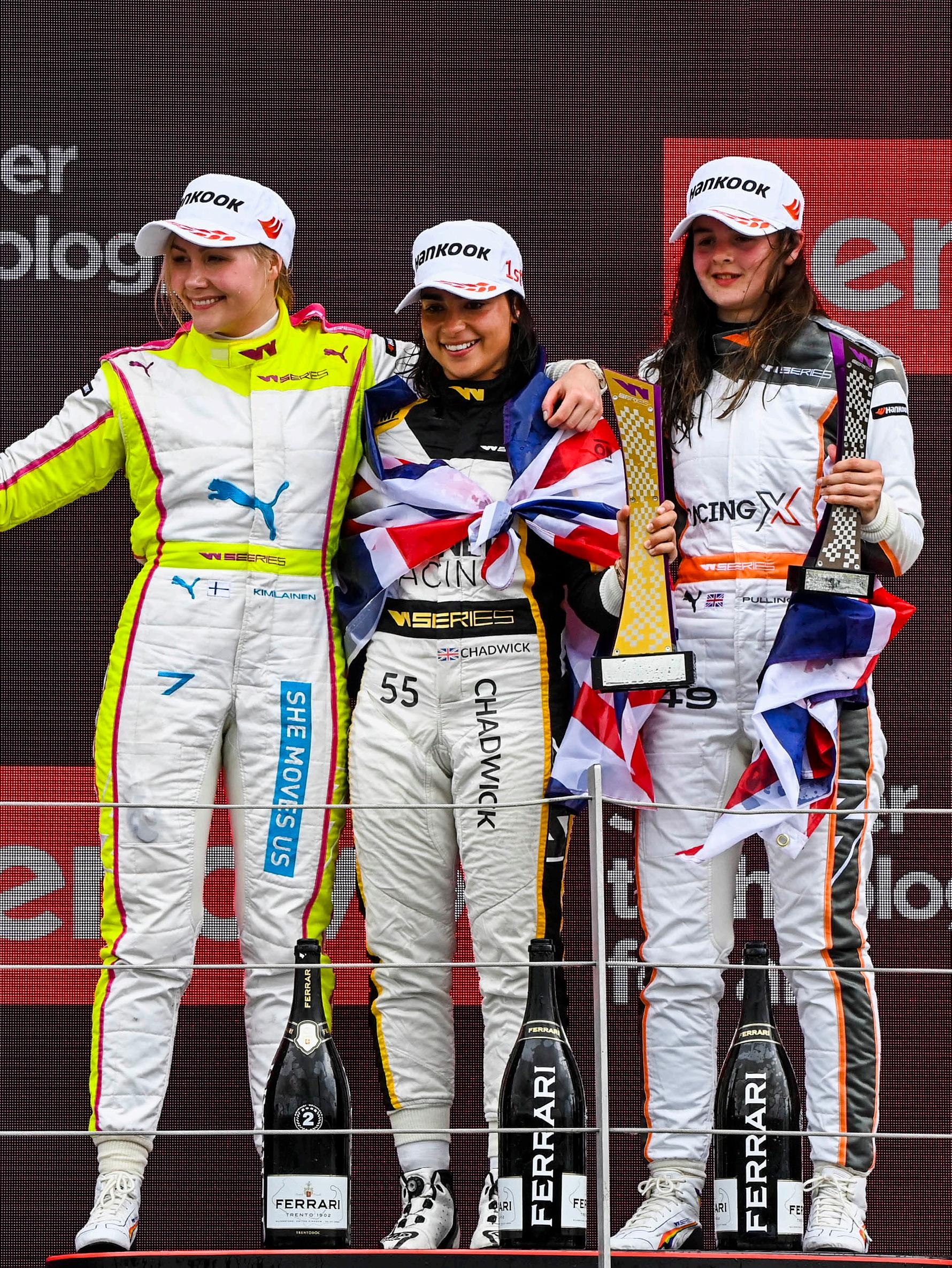
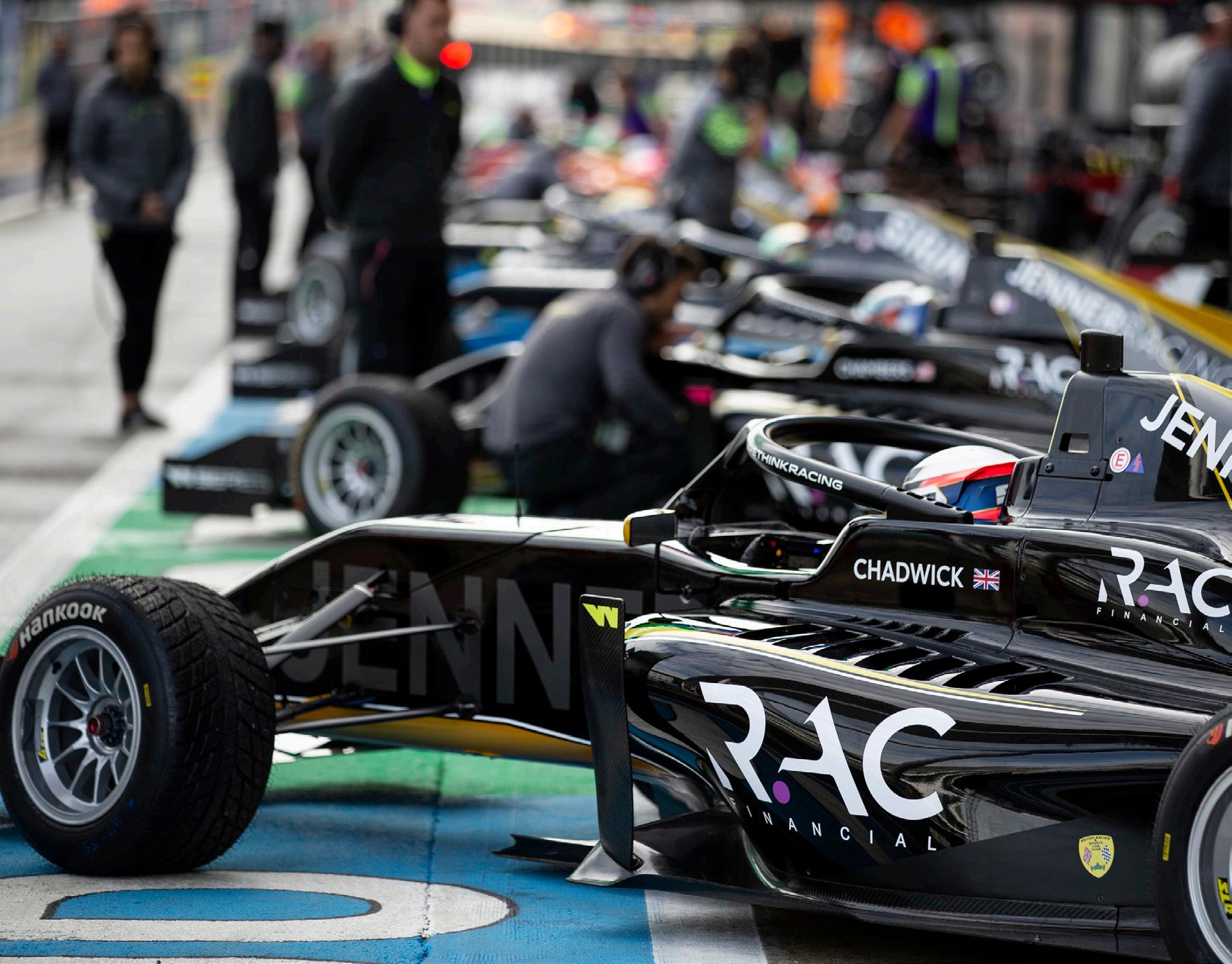
wonderful to hear the cheers and the roars of the crowd at Silverstone.
But not only that, it is still extraordinary for me, given how far we’ve come, that there were full stands for the W Series race. It’s very easy when Formula 1 isn’t on track for all the fans to go off and look at all the amusements, fan zones and to do other things, but they came and they filled the stands when we were racing, so it was a joy to see.
People generally are incredibly supportive of women, they understand what we’re trying to achieve which is to redress the gender imbalance in motorsport, and we have fantastically exciting racing, but it still takes my breath away when we do have packed stands watching us.
EO: This year’s race at Silverstone attracted a peak UK TV audience of more than one million viewers, and the highest-ever race audience in W Series history. What is the significance of this milestone?
CBM: The significance of the Silverstone milestone is that if we can do it in one territory, there is no reason why we can’t replicate that in many other major commercial territories around the world, the US being one of the most obvious.
Formula 1 has used the Drive To Survive series on Netflix very effectively to build audiences in the US and further increase its TV exposure, so I think it would be great at some point in the future if W Series can have its own equivalent documentary series. That is what I hope we will be able to do in the next couple of years.
EO: In collaboration with Silverstone and Motorsport UK, how did W Series also recognise and showcase the success of women in all areas of motorsport as part of Women in Motorsport Day?
CBM: I wear two hats, as I’m CEO of W Series, but I’m also a board director at Motorsport UK. I chair the Equality, Diversion and Inclusion (EDI) Committee at Motorsport UK and one of my subcommittees is Women in Motorsport, so Motorsport UK worked together with us to celebrate women in motorsport.
Most importantly, the focus wasn’t



on the famous people, i.e., the drivers. The focus was on the ecosystem of women who work in motorsport, especially stewards and marshals. We had an event specifically to celebrate female stewards and marshals.
They do the most incredible job. They are an army of volunteers and what is really fantastic is the number of women involved. I think it’s really important to spotlight the number of women involved in motorsport, but for me and with my Motorsport UK hat on, what we are all about is the future health of motorsport.
Therefore, we have to demonstrate to all young girls that motorsport is open and welcome to them. Motorsport is unique to the extent that it encompasses all the STEM subjects, you can be mechanic, you can be an engineer, you can be a data analyst, and so on. 90 percent of the people in our London office are women, and they are either in management positions, accountants, lawyers, marketers, etc. What I would like to be able to do is continue to tell all schoolgirls to do what they love and what they’re very good at in life, be the best that they can be, and I’m sure motorsport would welcome them with open arms.
EO: How do you see the future of W Series developing in the coming years? What are some of your key priorities, goals and targets?
CBM: To grow our fan base, especially internationally. If we do that, W Series will become increasingly attractive property for sponsors and partners to get involved with.
Even though we’re really successful in the UK now, we really want to build our US audience and presence. We’ve got three races there this year, we’ve got an American driver, and I think we really need to start marketing ourselves to become a more wellknown brand in the US.
With more money, we can keep building all aspects of W Series. We can afford to support younger girls who are in series below W Series, we could potentially do scholarships, we could be encouraging more girls to get into motorsport because it’s not just about the pinnacle of W Series.
We will be supporting young girls all the way through in their progress to get into W Series.
CHARGE ON
Maeving is taking the industry by storm with the model RM1, an electric motorcycle riding at the forefront of transport built with the urban commuter in mind. We speak to Maeving co-founder Sebastian Inglis-Jones, about the company’s origin, model and mission for the future

Writer: Marcus Kääpä
There is a new pioneer in British vehicle engineering.
Founded in 2017 and based in Coventry, London (UK), Maeving is an electric motorcycle maker that aims to revolutionise urban transport and redefine the way we think about the urban commute.
With green transport at the forefront of everybody’s minds, Maeving has taken a great leap forward in the electric vehicle (EV) sphere, represented by the brand’s hallmark model, the Maeving RM1 (RM1), a motorcycle that manages to combine the best of a biker’s wants with the pressing urban and environmental needs of the present day. “We decided early on that we wanted to start a green business that helped combat climate change,” begins Sebastian InglisJones, co-founder of the company. “Will Stirrup (co-founder) and myself met at university, and after five years in commercial training and marketing careers, we figured that we had the knowledge and experience to start up
Sebastian Inglis-Jones our business with a focus on helping combat this issue.
“The idea behind Maeving and the RM1 model was inspired by our time in China; what we saw there was the future of urban commuter transport and we wanted to bring this to the UK. In China, everyone has small lightweight electric motorcycles, but crucially, these have removable

batteries that you can take and charge at home or in the office like you would a phone or laptop, which completely overcomes the issue of waiting and charging infrastructure.”
The RM1 is multi-faceted in its design, running on clean energy as well as being a widely affordable option in the market of electric motorcycles, all the while paying homage to a retro-style outlook of the two-wheeled machine. But the most important aspect of the model is that it makes use of these removable battery packs for practical charging.
This form of battery charging removes the common concern of waiting for an EV to charge at a station. For commuters, the removable battery can be charged during working hours or at home while they sleep overnight (taking around 3.5 hours to fully charge), making it a very simple yet effective solution to the negatives of battery charging and a practical commuting vehicle.
“Before 2017, none of that was happening in the UK,” Inglis-Jones continues. “When we started the
business, 22 million electric bikes with removable batteries were sold in China, and only 297 of this kind were sold across the whole of the UK - the market didn’t really exist here.
“We dwelt on how to bring this vehicle transformation over to the UK and decided that the Chinese bikes were not quite the right standard for the UK and EU markets. We wanted to produce something that combined the practical elements of these motorcycles with higher quality and a great aesthetic, to answer the demand for European customers as well as legislative processes. So, we took the concept of a removable battery and introduced a motorcycle with the exceptional engineering expertise from one of the UK’s oldest motorcycle manufacturers, Triumph, and a design that we wanted to see in the EV sphere. I believe that we have fulfilled the brief.”
SMART RIDING
Maeving’s RM1 has been built with the urban commuter in mind, redefining travel. The retro-style electric motorcycle is perfect for city streets and can reach a maximum of 45 miles per hour (mph) on straights, a realistic speed range for bustling urban travel.
When it comes to affordability, the RM1 is a pleasantly modest investment for its kind. Where many electric motorcycles can cost in excess of £10,000 (with some breaching £20,000), the RM1 retail price sits at the highly competitive mark of around £5,000 (£6,000 for its dual battery option). The bike can also be purchased on finance for as little as £107 per month which makes it one of the cheapest methods of transport around. Then there are the surprisingly low running costs.
“On the road, the RM1 costs less than £60 a year for 15 miles worth of driving every day – a commuting option that is hard to beat. We wanted to make it a practical and affordable option for many people, and the removable battery is a game changer in this space,” Inglis-Jones elaborates. “We see ourselves as having continued this technology by making the most energy-dense of its kind. The RM1 has a rear housing controller, and then a frontal one which has the proprietary battery. This opens on a hinge to the side so that it is easily accessible, slotting in smoothly after having been charged. The second optional battery can be stored in the “fuel tank” that doubles up as a
MAEVING RM1 – AT A GLANCE
- Zero emissions
- 45mph top speed
- Dual battery range: 80 miles
- Removable battery - charge from any plug socket
- 93kg kerb weight
- Automatic gearbox
- Two-year warranty
- Ride with a CBT license
- Anti-theft tracker

20-litre storage space for items like a raincoat or shopping.
“This storage option was another key aspect of the bike’s design, and it was great to be able to deliver that right in front of the rider instead of beneath the seat. When the storage compartment is used to house the second battery, it automatically connects to the bike governed by a computer control unit and works in conjunction with the first in order to deliver the smoothest and most economical riding experience.”
Maeving’s RM1 does not skimp on other useful features. On top of providing the rider with a USB charging port for their phone, the motorcycle comes with a GPS tracker for added security in urban areas.
“If a vehicle has a GPS tracker, it has a 93 percent chance of recovery if stolen or otherwise moved,” Inglis-Jones adds. “It is simple and important technology such as this that makes all the difference.”
PEAK PERFORMANCE
Clean energy and practicality are two pillars at the centre of the Maeving brand, with the third being performance, one of the most important aspects of the RM1.
“We didn’t want the RM1 to reduce the rider experience,” Inglis-Jones says. “With most electric engine motors, you have a very high torque - high acceleration – and we wanted to keep this aspect. But usually, electric bikes introduce really big heavy battery packs and end up weighing around 250kg compared to a combustion engine motorcycle at around 160kg. These batteries are also the most expensive parts of the bikes; they cost huge amounts and don’t deliver when it comes to range simply because of size and weight. These options cost up to three times as much as their petrol counterparts, with a limited range of 60 to 80 miles, meaning charging concerns are very real.
“The RM1 cuts out range anxiety, and at the same time provides a speed level realistic for a rider’s experience in urban areas, increasing overall bike range significantly.”
For Inglis-Jones, the electric transformation for two-wheeled vehicles is not fully recognised, and Maeving seeks to change that perception.
In the UK, 34 percent of sales are bikes of 125 cubic capacity (cc) or below, with most people being concentrated in cities across the country, making a lower power city bike a much more desirable option en masse than a top-end


– SEBASTIAN INGLIS-JONES, CO-FOUNDER, MAEVING

high-performance electric motorcycle for the individual with deeper pockets.
“This was the impetus behind starting the company and it remains central to our thoughts,” Inglis-Jones tells us. “If we are going to drive transformation in this metric, we need to produce low power city bikes with removable batteries, high quality engineering, substantial range, and security.”
CITY HEALTH
Tackling the issues around urban pollution is a key part of Maeving’s overall mission. In 2011, China essentially outlawed the use of petrol motorcycles.
“One of China’s reasons for pushing the transition to EVs was to clean up the harmful gasses and particulates in the air,” Inglis-Jones explains. “The electric motorbikes that they introduced helped to reduce fumes across cities and also had a lower maximum speed, allowing for greater distance and less energy usage.
“One of the other things that you notice when you are in Shanghai for example, is when the lights turn green and the streets are full of quietly moving traffic; the reduction of noise pollution is another benefit of electric engines. Quieter streets and cleaner city air are both better for people’s health and the planet, and the positive impact of electric engines on climate change is front and centre for us.”
Recently, Maeving commissioned an independent study to assess the company’s impact of introducing the RM1 to the vehicle market. The study found that moving from a traditional petrol-powered motorcycle to the RM1 led to a 71 percent decrease in CO2 emissions, while moving from a traditional petrol car decreased by a whopping 84 percent.
“Interestingly, this study also showed that per mile, the RM1 was producing even less CO2 than somebody using the London Underground,” he reveals. “That’s a 22 percent reduction in CO2 emissions per mile taking into account use of our national grid, which is made up of a mixture of energy sources spanning renewables and alternatives
– SEBASTIAN INGLIS-JONES, CO-FOUNDER, MAEVING

to traditional sources such as gas and coal. Yet, an RM1 using electricity generated by renewable power results in a complete reduction of emissions across the board.”
THE FUTURE OF THE URBAN SPACE
Another environmental benefit the RM1 provides urban areas is linked to its removable dual battery, which completely eliminates the need for charging stations and in turn saves environmental space in built-up areas. One large challenge of EV introduction is the need for infrastructure to go alongside them, and Maeving’s RM1 avoids this issue with its portable batteries.
While EV fast charge points can charge a battery in around 30 minutes, the fast charge option is known to decrease the lifespan of a battery. Whereas an RM1 battery takes around 3.5 hours to charge, it does not impact the overall lifespan of the battery and, due to its portability, this can be done while at work, at home, or over the course of a night without waiting at a designated spot or using up more urban space.
“Battery technology and density are only going to improve, and we are always looking ahead to the future and the needs of people, cities and the planet,” Inglis-Jones concludes.
Maeving’s RM1 is a welcome addition to the electric motorcycle market, appealing to many with its practicality, green energy, high quality, affordability and smart systems. It’s safe to say that the future of the urban commute is here, embodied by Maeving’s company slogan: Charge on.
MAEVING
www.maeving.com








